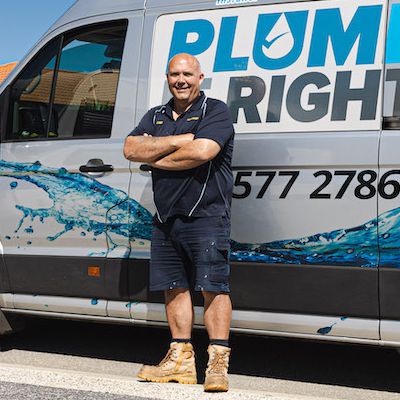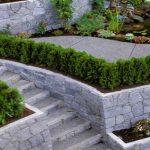The Ultimate Guide to Reducing Water Waste in Your Home
I’m John of Plumb It Right. I have been a plumber for over 38 years. After all those years working around Perth, I have realised that even minor changes can lead to significant impact in terms of water conservation.
So, if you’re planning to lower down your bill, minimise water waste, or perhaps, you just want to contribute to the environment, then here’s your guide.
Below, I’ll list down some simple and cost-effective ways to reduce water waste in your home.
- Immediately Fix Leaks
You might think that a tap that’s dripping is no big deal.
But over time, these drips will accumulate, and you’ll end up wasting thousands of litres of water!
I have personally encountered houses that are losing a lot of money by simply ignoring these minor issues.
It may just be a single dripping tap, but if you don’t fix it for a year or so, you’ll end up wasting up to 20,000 litres! If you think about it, that amount of water is enough to fill up a swimming pool!
So, just imagine how much this can drive up your bill.
Always inspect your pipes, taps, and other fixtures. And if you notice a leak, tighten the connections. If they are damaged, then you’ve got to replace them right away.
For major leaks, it is best to leave it to professionals. Make sure to inform everyone who lives with you to immediately report any leaks.
- Consider “Low-Flow” Fixtures
If you really want to lower down your water consumption, you should opt for low-flow fixtures for your home. These should apply to faucets, shower heads, and toilets.
They come with features that limit water flow. While you can still enjoy a good shower, they don’t use as much water as the regular ones.
Opting for low-flow varieties will let you cut down up to fifty percent water use. And you will not only save money – but you’ll be also helping the environment, too!
Choose products labelled as “WaterSense”. This means that they are water efficient.
Also, some of them can maintain water pressure even with less use of water.
Not ready to replace everything just yet? Focus on the faucets or shower heads in the bathrooms you’re using daily. Since they are the most-used in your home, changing them to low-flow versions can lead to significant savings.
- Upgrade to Dual-Flush Toilets
We use toilets several times in a day.
Therefore, they are considered major water users. You may want to change them into the dual-flush varieties.
These typically offer two options: a lower volume flush for liquid waste and a higher volume flush for solid waste.
If you decide to go for the dual-flush toilets, you could end up saving thousands of litres each year!
Consider a conversion kit if you cannot afford a full replacement just yet. These kits are cheaper, and you can install them in most standard toilets.
With each flush using less water, your septic system will not be strained too much, allowing for savings on maintenance, too.
- Avoid Long Showers
Showers are among the household utilities that use the most water. A 10-minute shower can use as much as 90 litres! So, try to reduce your shower time. Even cutting it down by a few minutes can make a significant impact!
Need more tips? The next time you shower, bring along a timer. That way, you will not get too caught up. Also, when you’re lathering up, switch the shower off. Turn it back on only when you rinse.
- Greywater Reuse
Greywater is water that is slightly used—it comes from sources like showers and sinks. Instead of getting rid of it, it’s much better to reuse it for use in applications such as feeding your garden.
You can setup buckets at the sink to catch greywater. Or better yet, invest in the more advanced systems, which can capture and filter water from various sources. Discuss with a plumber what options are available for you.
- Maximise Water Use When Washing Clothes and Dishes
The two most water-using appliances in households are washing machines and dishwashers. Thus, know how to use them wisely.
An easy rule to follow is running full loads. In this way, you get the best out of the water that is used. Luckily, most of the recent machines are designed to consume less water per cycle compared to older models.
- Be Smart with Garden Watering
If you have a garden at home, then you’re certainly using too much water daily, especially since Perth has a hot climate. But this doesn’t mean you can’t have a garden!
Here’s what you can do:
- Water your plants in the morning when the temperature is lower to avoid waste through evaporation.
- You’d better install timers on your hose sprinklers, so you remember to turn them off.
- Why not plant some drought-resistant plants? They don’t need a lot of water to survive.
- Spread a layer of mulch. It helps keep the soil moist for longer, so you don’t have to water as often.
- Invest in a Tankless Water Heater
Choose tankless water heaters instead of the traditional ones. This not only minimizes energy waste but also saves a lot of money since they do not have to keep the water warm all day. It will only heat water when you need to use it.
Another good thing about it is you won’t have to wait long to enjoy hot showers. Since you will not be turning on the tap to wait for hot water to come up, you can minimise water use.
Sure, they are more expensive than regular heaters, but you’ll save more money in the long run. They also help you save space since they are usually more compact.
- Use Faucet Aerators
Using faucet aerators allow you to lessen your water consumption without the need to sacrifice pressure. They work by mixing air with the flow of water. That way, you’ll be using less water and not notice any difference.
As a matter of fact, the aerators could help you save water to as much as fifty percent! And the best part? You can easily install these things yourself! Simply screw them into the tip of the faucet.
Now, here’s a bonus tip. For those living in heritage houses, you may need to change aerators every few years to ensure they continuously work efficiently.
- Embrace Water-Saving Habits
Small habits when done daily can have massive impact when it comes to water conservation at home. Embracing the basics like making it a habit to turn off the faucet while you’re still brushing your teeth, addressing leak problems the moment you detect them, and maximising water use when washing dishes and clothes, can surely go a long way!
And the best part? All these little things can add up! In a year or so, you’ll be saving significantly on your utility bills while also contributing in the conservation of precious resources.
It’s also important that you get everyone in the household to join you. Get everyone involved! Perhaps, you can set a goal for each individual to lessen water use in their own ways and have them keep track their progress.
Keep an eye on your bills and you’ll surely see a difference after following all these tips.
Remember – when everyone contributes, the savings can add up fast. Even if they are just small changes, but if you are consistent, you’ll surely see a huge improvement.
Final Thoughts
As you can see, it’s not really that complicated to reduce water use. And it does not need to be costly as well! Even minor changes, such as upgrading some of your home fixtures and being conscious with your daily habits, can sure make a huge difference. Aside from saving money, you’ll also doing your share in protecting our environment.
If you think that it’s time to do some eco-friendly plumbing upgrades, then let us know about it. Here at Plumb It Right, we can offer expert advice on how you can minimise water usage.
Let’s all work together in saving water. Remember – even a small drop count!







